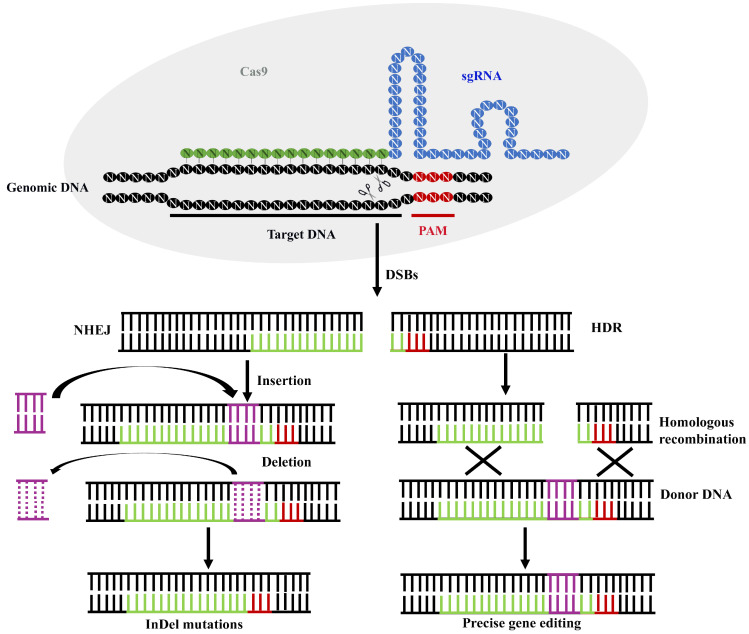Figure 1.
Schematic illustration of the mechanism of genome editing using CRISPR/Cas9 system. The single guide RNA (sgRNA)/CRISPR-associated protein 9 (Cas9) complex binds to the target site at a complementary region of the genomic DNA. The protospacer adjacent motif (PAM) is recognized by Cas9 nuclease, which introduces the double-stranded breaks (DSBs) within the target DNA at a site three base pair upstream to the PAM. Double-stranded breaks (DSBs) of the target DNA are repaired by non-homologous end joining (NHEJ), resulting InDel mutations (insertion or deletion) or homology-directed repair (HDR) in the presence of a donor DNA, resulting in precise gene editing.

